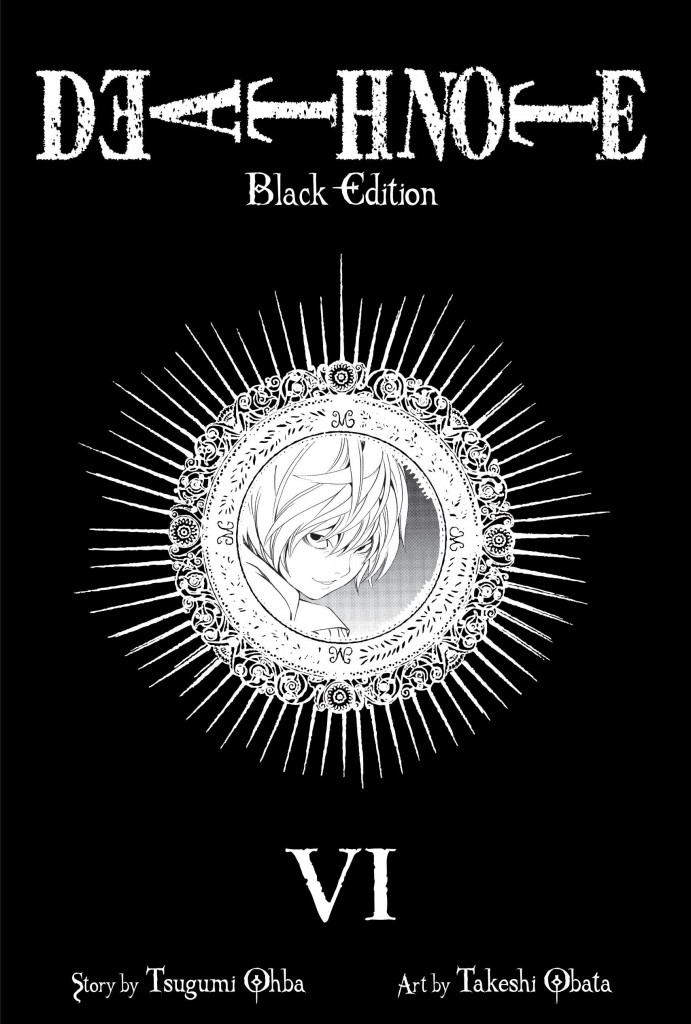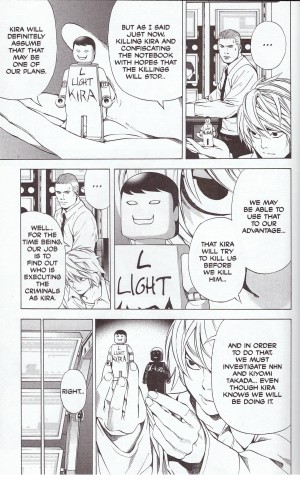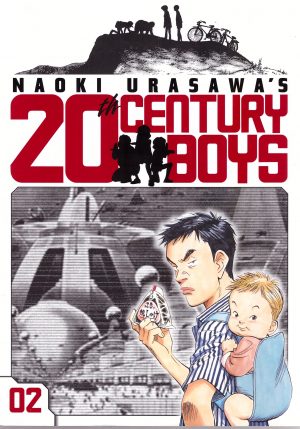Review by Karl Verhoven
Original series books 11 and 12 are combined for this final larger packaging of the Death Note series. It’s the weakest overall, but it should be noted up front that this doesn’t apply to the finale, occupying roughly 25% of the book, which more than lives up to the high standards set by the rest of the series.
The reason the remainder falls below par is down to three elements. Firstly the shocks and twists that have been the series landmark since Light Yagami first chanced on a Death-God’s notebook are pretty well missing. Then much of the content comprising what was originally Book 11 has the feeling of marking time. Beyond that there are matters that need to be addressed before the final stages, but they’re decompressed and in places very dry reading indeed. The analysis of every move and self-questioning essential to matters delves deeper and deeper into minutae as it folds in on itself. It’s as if writer Tsugumi Ohba wants to avoid any accusation of failing to explain the thoughts of the primary cast. On a lesser scale, the binding together of what were originally serialised chapters leads to repetition, with Yagami’s repeated gloating evident. “In this world I am the law, and I am the one maintaining order. Now I am justice. The world’s only hope”, is a fine slab of egotistical ranting, but there are several similar, and the repetition is noticeable.
Takeshi Obata turns in his usual professional job, disciplined in providing head shots and necessary interiors, although enjoying himself with the accessories, and spectacular when given the chance. He’s also able to let loose at the halfway point with an abduction and its consequences.
Black Edition V added one new character and revived one from the earliest days of the series, and both play pivotal parts. Kiyomi Takada is the TV face conveying the messages of serial murderer Kira, and Teru Mikami is actually carrying out the killings on behalf of Yagami, whom we know to be Kira. Mikami is present at the final showdown and instrumental in events.
This begins with a well staged stand-off, but from there degenerates into a series of explanations that require each major player to anticipate every exact move of their opponent and counter it until events flow like tumbling dominoes. With all the variables that could occur, it strains belief. That, though, is but the prelude to the actual conclusion itself, which is brilliant. It’s tense, unpredictable, and if there’s been any doubt about moral ambivalence on Ohga’s part, he delivers a damning verdict. This all leads to a final settlement so apt it’s as if a bow has been tied on a parcel.
Because it’s been so good for so much of the run, anyone who’s read Death Note this far isn’t going to cut loose without checking the last volume, and the finale pays off anyone reading the remainder. That content, however, can be partially redeemed by not reading the entire series from start to finish without pause. Leave a while between finishing Black Edition V and beginning this, and the ending permits that, and Black Edition VI is likely to be a more satisfying experience.
As a series, Death Note has been stunning, only very rarely taking the obvious path, and providing several compelling games of mental chess. A few weaker chapters approaching the conclusion don’t discount the remainder. If preferable, the massive slipcased All In One Edition gathers the complete story in a single volume.





